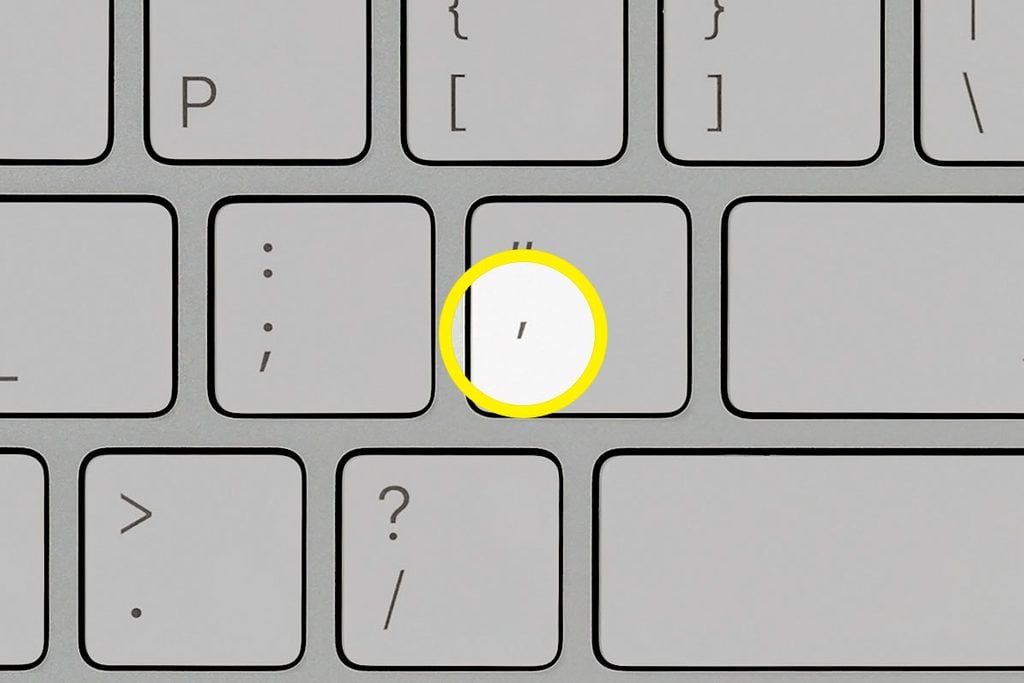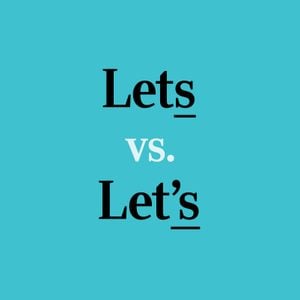Here’s When You Should Use an Apostrophe
Updated: May 09, 2023

An apostrophe is not an accessory. Here are examples of how and when to use an apostrophe—and when you definitely shouldn't.
Little punctuation marks—like a comma, question mark, or an apostrophe—can make or break the flow or meaning of a sentence. In fact, this is how confusing life would be without proper punctuation. For grammar and punctuation nerds, a poorly placed apostrophe especially brings chills. But knowing when to use an apostrophe is definitely one of the most confusing grammar rules! We break down various apostrophe rules for when to use an apostrophe. Plus, check out our guide on how to use a semicolon and how to use a colon.
What is an apostrophe?
Apostrophes are the curly floating commas in sentences that usually indicate possession or a contraction. There are a few set phrases and holidays, however, that also use apostrophes. In fact, apostrophes have some of the most confusing grammar rules in the English language.
When to use an apostrophe
Combining words
Contractions, or shortened groups of words, use the apostrophe to replace the missing letter. For example, if you want to connect “do not,” you can use an apostrophe to replace the second “o” making the new word “don’t.” Other common words that are often combined include “not,” “are,” “would,” “had,” and “will.” These omissions make words and sentences easier to read and write, too. Things get confusing if misuse apostrophes, but it’s OK to safely ignore these strict grammar rules.
Examples:
- “I don’t (do not) understand all these confusing grammar rules.”
- “That isn’t (is not) my car.”
- “They’re (they are) going to the movies tonight.”
- It’s five o’clock. (Technically, “o’clock” is a contraction of “of the clock”!)
And in case you’re (you are) wondering, here’s (here is) why “will not” becomes “won’t” instead of “willn’t.”
Showing ownership or possession
You don’t just randomly decide when to use an apostrophe. For most singular nouns, you add an apostrophe and “s” to make it possessive or to show ownership. For example, “The cat’s litter box.” Most plural nouns only need an apostrophe, such as, “The dogs’ leashes.” If you’re dealing with a plural word or name that already ends in “s,” add an “-es” to the end to pluralize it, followed by an apostrophe, like “The walruses’ tusks.” Plural nouns not ending in “s” need both an apostrophe and “s”: “The children’s toys.”
Examples:
- “Can you get Mommy’s purse from the car?”
- “The dog’s bowl needs more food.”
- “The kids’ schools are open again.”
- “The buses’ wheels went round and round.”
- “The three blind mice’s tails got cut off with a carving knife.”
When the word (or name) you’re making possessive is singular and already ends in “s,” this can get extra confusing—so much so that even grammar experts and style guides disagree on what to do. But here’s Oxford Living Dictionaries’ take on it: They suggest adding an apostrophe “s” when, if you were saying the word out loud, you would pronounce the extra “s.” And, to be fair, this is usually the case. So you would write “The walrus’s tusks were huge” and “The bus’s wheels went round and round.” But sometimes you don’t say the “s”; for instance, you could write “Wegmans’ parking lot was full” since you probably wouldn’t say “Wegmanses” out loud. But if you’re unsure, you’re probably best off just adding the extra “s.”
Examples:
- The Joneses’ cat escaped again.
- Francis’s cookies were the best dessert at the party.
We know, that’s a lot! Check out our whole guide to how to pluralize a word that ends in “s.”
Letters (sometimes)
While you don’t normally add an apostrophe to make something plural, you can do this if you’re referring, specifically, to letters. You might not encounter this much, but you could say “Make sure to dot your t’s and cross your i’s.” (The apostrophe is mostly so that, for instance, “I’s” doesn’t read as just the word “Is.”)
However, this depends on style guides and personal preference. Some sources assert that only lowercase letters need the apostrophe, and, indeed, that capital letters should not have them, especially with formal or professional abbreviations. But sometimes, it still makes sense for capital letters to have them when without the apostrophe, it could be mistaken for a real word. For this rule, it’s really best to use your judgment!
Example:
- I got all A’s and B’s on my report card.
However, if you were saying “I got all Bs and Cs,” you don’t necessarily need the apostrophes since neither of those could be mistaken for real words like “As” could. But it does look a bit more polished and make it that much clearer what you’re saying.
- She has two PhDs. (Not “PhD’s”)
Certain holidays and abbreviated dates
Apostrophe rules get confusing when it comes to holidays since some have an apostrophe while others don’t. For example, Americans celebrate Mother’s Day, April Fools’ Day, and Veterans Day—all with different apostrophe uses. Make sure to look up the proper spelling of the particular holiday name before jotting it down.
When to use an apostrophe for dates depends on how you want to write the date. Don’t add an apostrophe “s” to the end of the whole number. Instead, for abbreviated dates, put the apostrophe in the front. So both “Big hair was popular in the 1980s” and “Big hair was popular in the ’80s” are correct. (The apostrophe here replaces the “19.”)
- I like to wear green on St. Patrick’s Day.
- Were you born in the 1960s or the ’70s?
When not to use an apostrophe
Making a word plural
Adding an “s” or “es” makes words plural without the help of an apostrophe. One grammar mistake that drives editors crazy is the use of an apostrophe to “pluralize” a word, as in, “I bought my mom some slipper’s for her birthday.” If the subject of the sentence is already plural, however, add the apostrophe after the “s.” Like the earlier example: “The dogs’ leashes.” The “s” makes the word plural; the apostrophe makes it possessive.
- I love my new leggings! (Not “legging’s”)
- My leggings’ pockets are so convenient!
Making personal pronouns possessive
This is where when to use an apostrophe gets real confusing. Unlike many other words, personal pronouns do not use apostrophes to form possessives. Instead, these pronouns have different spellings. So “they” becomes “their” (not, for instance, “they’s”) to show possession. Another example is “it.” If you want to indicate possession, use “its,” not “it’s,” which means “it is.” Its’ is also incorrect.
- Those sneakers are hers. (Not “her’s”)
The rabbit dove into its burrow. (Not “it’s)
Plural numbers
The same rule for decades applies here. Apostrophes don’t pluralize numbers any more than they do words. So if you’re talking about age, the man is in his 30s—not his 30’s.
- You’ve got a baby—are you prepared for the Terrible 2s? (Not “2’s”)
- My 20s were the best years of my life. (Not “20’s”)
Using apostrophes correctly is one easy way to boost your writing. Now that you know when to use an apostrophe, make your high school English teachers proud by also watching out for these common grammar mistakes. Or keep the punctuation train going with our guide to using a hyphen vs. a dash.
Sources:


